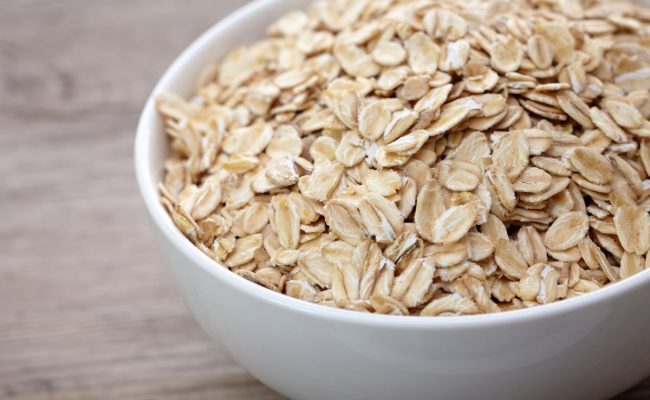
Vitamin A actually encompasses compounds called retinoids, retinal, retinol and carotenoids. The difference of forms of vitamin A depend on if they come from animal or plant foods. The body converts carotenoids from plant foods into vitamin A.
Vitamin A from animal foods like dairy and meat are already in the usable form for the body.
Vitamin A has many important roles including: vision, cell growth, antioxidant protection and role in immunity.
Not getting enough vitamin A is rare in developed countries, but vitamin A deficiency is still a problem in under developed countries.
Vitamin A is a fat soluble vitamin, and like other fat soluble vitamins it has the potential to be harmful in very high doses.
Consuming high amounts of preformed vitamin A (not from plant carotenoids) is the main concern usually from supplements.
Eye health
Vitamin A plays such a critical role for eye health because it is actually part of the eye structure.
Vitamin A is part of rhodopsin which is a protein in the eye that absorbs light. Vitamin A is also needed for cells in the membrane of the cornea (1).
One of the first symptoms of vitamin A deficiency is night blindness because the eye doesn’t have vitamin A for rhodopsin.
Unfortunately, it is estimated between 250,000 to 500,000 children become blind every year because of vitamin A deficiency (2).
The benefit of vitamin A is it helps the eyes to absorb light which is needed for sight. Frank vitamin A deficiency can lead to blindness.
However, keep in mind vitamin A cannot help improve vision. Consuming a lot of vitamin A rich foods won’t mean you can stop wearing your glasses or contacts.
Cell growth
Vitamin A is needed for growth and for cell differentiation (making new cells). Because of this, vitamin A is critical for embryonic development and organ formation.
It is important for pregnant women, infants and children to get the recommended intake for vitamin A.
Pregnant women should be aware getting too much preformed vitamin A can increase risk for birth defects.
Supplement doses for preformed vitamin A up to 10,000 IU are thought to be safe for pregnancy, but check with your physician before taking supplements with vitamin A during pregnancy.
Antioxidant protection
Vitamins A,C and E are considered antioxidant nutrients. This means vitamin A can help protect body cells from damage from carcinogens, toxins and oxidative damage.
In vitro studies have shown vitamin A can fight cancer cells. While these studies suggest vitamin A may ward off cancer growth, but human studies looking at the intake of vitamin A and cancer do not suggest taking large amounts of vitamin A may lower cancer risk.
Some studies have shown a higher intake of fruits and vegetables, which are sources of carotenoids, are associated with a lower risk for lung cancer.
However, studies have not shown a protective role of vitamin A supplements and lowered cancer risk.
Immune health
A 2008 review (3) suggests vitamin A and D have a crucial role in immune health. Vitamin A may have multiple roles in the immune system such as: lymphocyte activation, T helper cell differentiation and production of antibodies.
Vitamin A deficiency is also associated with impaired immune response and can increase risk for infections.
Even though frank vitamin A deficiency is rare in developed countries, mild vitamin A deficiency could happen especially in infants and children.
Mild deficiencies in children could increase risk for respiratory illness and diarrhea.
Top vitamin A foods
Orange and yellow fruits and vegetables like sweet potatoes, carrots, mangos and pumpkin are very high in beta carotene which the body converts to vitamin A.
In fact, one sweet potato provides over 500% RDA for vitamin A. Leafy greens also are rich sources of beta carotene.
Some of the most concentrated sources of preformed vitamin A are from liver.
For example, eating 3 ounces of beef liver provides over 400% RDA for vitamin A.
Vitamin A is also found in dairy, eggs, fatty fish, legumes and fortified cereals.
How much vitamin A do you need?
The RDA for women under 50 years old is 700 mcg of retinol activity equivalents (RAE) and 900 mcg RAE for men.
Pregnant and lactating women have a higher RDA because of their higher demand for cell growth.
RAE can be converted from beta carotene or preformed vitamin A from animal foods.
Data suggests most people get adequate intake of vitamin A from the diet in the US. However, developing countries have a higher incidence of vitamin A deficiency.
Risks for too much vitamin A
The risk for getting too much vitamin A is only from preformed vitamin A sources. You don’t need to worry about getting vitamin toxicity from eating too many carrots or other fruits and vegetables.
Usually the main concern would be from consuming very high doses of supplemental vitamin A in a short period of time.
In general, toxicity is considered a dose close to 10 times above the RDA taken long term.
Currently, the UL for preformed vitamin A is 3,000 mcg of vitamin A.
Special concern is also noted for pregnant women getting high doses of vitamin A because of the increased risk for birth defects.
Pregnant women need enough vitamin A but not extreme intakes. If you have questions about your vitamin A intake and pregnancy, speak with your doctor.
Conclusion: Vitamin A
Vitamin A has many critical roles in the body. One of the most apparent roles it has is playing a role structurally in the eye and being an important part of vision.
Vitamin A is also needed to make and form new cells in the body, so it plays a critical role in times of growth and development.
Vitamin A is considered an antioxidant because it protects cells from damage, and it plays a role in immunity.
Most people in developed countries get adequate amounts of vitamin A. Consuming orange and yellow fruits and vegetables is an easy way to bump up your vitamin A intake.










